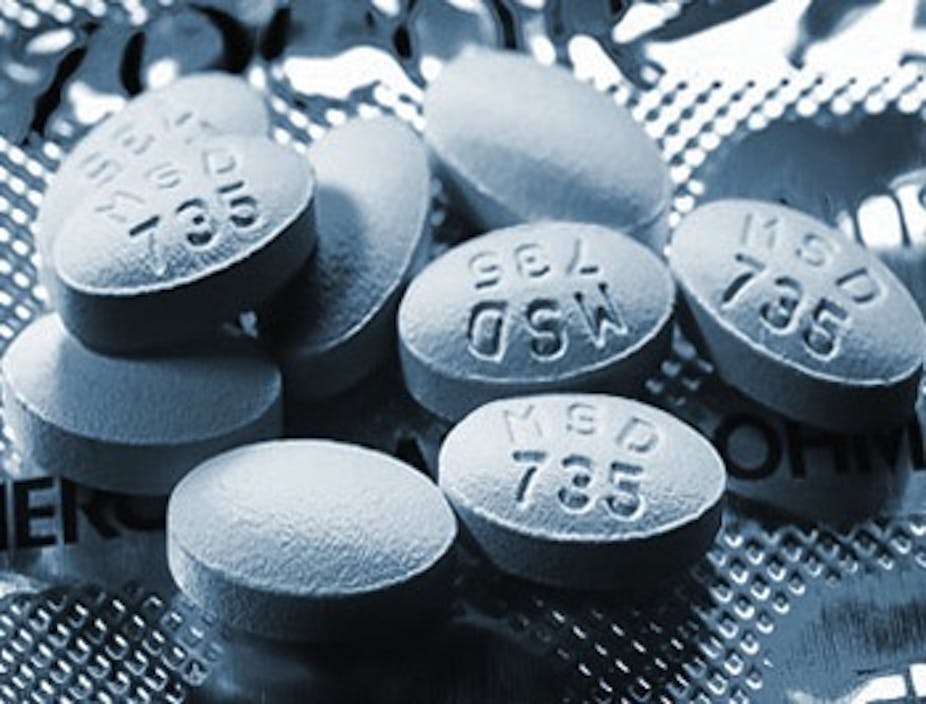A panel convened by medical journal BMJ to investigate whether it was right to correct rather than retract two pieces featuring a mistake about side effects from statins has endorsed the journal’s decision. The ten-month controversy highlights some recurring issues with how medicine works.
Statins are a class of cholesterol-lowering drugs that have been attracting controversy recently as questions are raised about their effectiveness.
In October 2013, BMJ published a study and an opinion piece that both erred when quoting another study. The journal published corrections on both pieces when the issue was raised by Oxford University Professor Rory Collins. And convened a panel to review its decision when Collins called for their retraction.
Overstated side effects
The first of the BMJ pieces was an analysis by a group led by Harvard University Medical School’s Professor John Abramson arguing against widening the criteria for prescribing statins.
Currently, one in eight of all the people living in England, Wales, Northern Ireland and Australia are taking statins to reduce their cholesterol. Recent UK guidelines recommended widening these criteria, potentially increasing the number of people taking them to one in five.
Abramson’s paper argued that in the new group of patients who would be recommended statins, 140 would need to take the drug for five years to prevent one serious cardiovascular event. But, it said, 25 of the 140 (18%) would suffer “side effects ranging from minor and reversible to serious and irreversible”.
The other paper was an opinion piece by UK cardiologist Aseem Malhotra that raised questions about the benefit of prescribing the drugs to healthy people at low risk of heart disease. Malhotra claimed that 20% of patients taking statins have unacceptable side effects.
Collins, who is head of the Oxford University Clinical Trial Service Unit and of the international Cholesterol Treatment Trialists’ Collaboration, asked for the papers’ retraction on the basis that these rates of side effects were overstated and incorrect.
The BMJ’s internal review panel found the risk of side effects published in both of the original papers was based on a misinterpretation of a result in an observational study, but that the journal had done the right thing in correcting rather than retracting the papers.
That’s all good and well, but how did this controversy arise anyway? Statins are, after all, one of the most well-studied classes of drugs in history; approximately 200 million people worldwide take them.
Murky areas
So how can it be that there are still such heated arguments about who should be taking them and about their risks and benefits?
As it happens, the controversy highlights some of the problems doctors face when weighing up the benefits and harms for any therapy. The only unusual matter here is that the arguments are being played out in the media rather than the pages of academic journals.
For most treatments, as we widen the criteria for who should get treated, the benefits get smaller. And it becomes more difficult to accurately balance harms and benefits.
While it’s generally accepted that treatment decisions should be guided by clinical trials, such trials can underestimate the side effects of drugs. Participants in randomised controlled clinical trials are generally younger, for instance, and healthier than typical patients.
And trial design can cause a systematic underestimate of side effects. Consider the fact that many trials have a run-in period of several weeks before the main trial starts. If participants dropped out during this time, that is, they stopped taking the drug because they didn’t want to take it any more or because they had side effects, then they would not proceed to the main trial. So people who are likely to have side effects are often excluded from trial results.
What’s more, trials may not measure all side effects. (To ameliorate this, several studies have been set up to try and clarify the side effects of statins, independent of research conducted by the pharmaceutical industry. And sometimes the side effects measured in trials are not fully reported in academic papers.
An international campaign is calling for the data from all trials to be made publicly available so doctors and patients can make better informed decisions about treatments.
What do you think?
Whether the harms of statins outweigh the benefits depends on how you balance those benefits – avoiding heart attacks and strokes – and the risks – possible side effects, and having to take a tablet every day.
A recent study showed that many people value the potential increase in life expectancy from taking statins less than the “disutility” of taking tablets. While another showed exercise works as about as well as statins for preventing cardiovascular disease (as well as having positive knock-on effects on overall health).
Doctors don’t want to alarm people but they also don’t want to appear uncertain in front of them, so they often don’t discuss these issues with their patients.
But the days when doctors – or even worse, expert committees with vested interests – make decisions for patients should be over, particularly when the “patient” is not sick and the drug being taken is to prevent something that may not happen.
For those interested in taking charge of their health a little, here’s a beta version of the type of calculator that might help make decisions about risks and benefits, developed by Dr McCormack at University of British Columbia.
And next time you’re visiting a doctor, ask questions about treatment decisions. You have the right to know.

